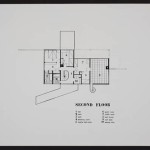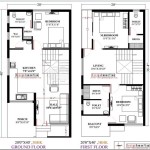Tiny House Over Garage Plans: Maximizing Space and Functionality
The concept of a tiny house has gained significant traction in recent years, driven by factors such as affordability, sustainability, and a desire for simpler living. One particularly innovative approach to tiny house living involves constructing a small dwelling unit above an existing or newly built garage. This model, often referred to as a "tiny house over garage" or a "garage apartment," presents a compelling solution for individuals seeking to downsize, generate rental income, or provide accommodation for family members. Successful implementation, however, hinges on carefully considered planning and meticulous execution, encompassing structural considerations, zoning regulations, and design elements. The selection and adherence to appropriate "tiny house over garage plans" is therefore paramount.
These plans serve as blueprints for the entire project, detailing everything from the foundation and framing to the electrical and plumbing systems. They provide a visual representation of the finished structure, enabling builders and homeowners to visualize the final product and ensure that it aligns with their needs and expectations. Furthermore, the plans are essential for obtaining necessary building permits and ensuring compliance with local building codes. Failing to utilize proper plans can lead to costly rework, structural instability, and legal issues, underscoring the importance of investing in a well-defined and comprehensive set of blueprints.
Key Point 1: Understanding Structural Implications and Garage Reinforcement
One of the primary challenges in constructing a tiny house over a garage lies in ensuring the structural integrity of the existing garage. Most garages are designed to support their own weight and minimal additional loads, such as snow accumulation on the roof. Adding a complete living space above the garage significantly increases the load-bearing requirements, potentially exceeding the original design capacity. Therefore, before embarking on the construction, a thorough structural assessment is crucial. A qualified structural engineer should evaluate the existing foundation, walls, and roof to determine their ability to withstand the additional weight. This assessment will identify any necessary reinforcements or modifications to ensure the safety and stability of the structure.
Typical reinforcement strategies may involve strengthening the foundation, adding support beams to the walls, and upgrading the roof trusses. The specific requirements will depend on the size and weight of the tiny house, as well as the original construction of the garage. For concrete slab foundations, the engineer might specify the addition of reinforcing bars or the application of epoxy coatings to enhance the slab's load-bearing capacity. Walls may require additional framing members, such as studs and sheathing, to distribute the weight more evenly. Roof trusses may need to be replaced with heavier-duty versions or reinforced with additional bracing. The "tiny house over garage plans" should clearly outline these reinforcement measures, specifying the materials, dimensions, and installation methods.
Furthermore, the plans must address the connection between the tiny house and the garage. Proper anchoring and fastening techniques are essential to prevent movement and ensure structural stability, particularly in areas prone to seismic activity or strong winds. This may involve using specialized connectors, such as anchor bolts, shear walls, and tie-down straps, to securely fasten the tiny house to the garage frame. The plans should also consider the impact of the added weight on the garage door and its operating mechanism, potentially requiring upgrades to handle the increased load.
Key Point 2: Zoning Regulations and Permitting Requirements
Compliance with local zoning regulations and building codes is another critical aspect of constructing a tiny house over a garage. Zoning regulations dictate the permissible uses of land within a specific area, including restrictions on building size, height, setbacks, and occupancy. Before initiating any construction, it is essential to thoroughly investigate the zoning regulations applicable to the property. Some jurisdictions may prohibit the construction of additional dwelling units on single-family lots, while others may allow it subject to specific conditions. These conditions may include minimum lot sizes, parking requirements, and restrictions on the number of occupants.
Building codes, on the other hand, establish minimum standards for the design and construction of buildings to ensure the safety and welfare of occupants. These codes cover a wide range of aspects, including structural integrity, fire safety, electrical systems, plumbing systems, and energy efficiency. Compliance with building codes is mandatory and enforced through a permitting process. To obtain a building permit, homeowners typically need to submit detailed plans and specifications for the proposed construction, demonstrating that it meets all applicable code requirements. The "tiny house over garage plans" must therefore incorporate all necessary details to satisfy the permitting authorities.
The permitting process can be complex and time-consuming, often requiring multiple inspections and approvals. It is advisable to consult with local building officials early in the planning process to understand the specific requirements and avoid potential delays or setbacks. Failure to obtain the necessary permits can result in fines, stop-work orders, and even the demolition of the unauthorized structure. The plans should clearly identify all code-compliant materials and construction methods, including fire-resistant materials, proper insulation levels, and accessible egress routes. Furthermore, the plans should address any specific requirements for tiny houses, such as minimum ceiling heights, ventilation rates, and energy efficiency standards.
Key Point 3: Design Considerations for Functionality and Livability
While structural integrity and code compliance are paramount, the design of the tiny house over garage should also prioritize functionality and livability. The limited square footage necessitates careful planning to maximize the use of space and create a comfortable and inviting living environment. The "tiny house over garage plans" should incorporate space-saving features, such as built-in storage, multi-functional furniture, and open-concept layouts. Vertical space should be utilized effectively through the incorporation of lofts, high ceilings, and shelving units. The selection of appropriate appliances and fixtures is also crucial, with compact and energy-efficient models being preferred.
Natural light and ventilation play a significant role in creating a sense of spaciousness and well-being in a small space. The plans should include ample windows and skylights to maximize natural light penetration and improve air circulation. Proper insulation is essential to maintain a comfortable temperature and reduce energy consumption. The design should also consider the orientation of the tiny house to optimize solar gain in the winter and minimize heat gain in the summer. Furthermore, the plans should address accessibility considerations, particularly for individuals with mobility limitations. This may involve incorporating ramps, wider doorways, and accessible bathrooms.
The aesthetic appeal of the tiny house is also an important factor. The design should complement the existing garage and surrounding architecture, creating a cohesive and visually pleasing appearance. The selection of exterior materials, colors, and detailing should be carefully considered to enhance the overall curb appeal. Interior design elements, such as paint colors, flooring materials, and lighting fixtures, should be chosen to create a comfortable and inviting atmosphere. The "tiny house over garage plans" should provide detailed specifications for all design elements, ensuring that they meet the homeowner's aesthetic preferences and functional requirements. Finally, careful consideration should be given to the placement of utilities and mechanical systems to minimize noise and visual clutter.
Ultimately, the success of a tiny house over garage project depends on meticulous planning and adherence to well-defined "tiny house over garage plans." By addressing structural implications, zoning regulations, and design considerations, homeowners can create a functional, livable, and sustainable living space that meets their individual needs and preferences.

Rustic 2 Story Tiny Home Plan With Optional 1 Car Garage 69771am Architectural Designs House Plans

14x32 Tiny House 567 Sq Ft Floorplan Model 6e 29 99 Pic Floor Plans Small Cabin

Pin On Dream Home

Tiny Cottage W 1 Car Garage

Contemporary Viron 480 Robinson Plans Carriage House Garage

27 Adorable Free Tiny House Floor Plans Craft Mart

The Best 2 Bedroom Tiny House Plans Houseplans Blog Com

2 Bedroom Tiny House Plans Blog Eplans Com

Small Home With A Big Garage Floor Plan

Tiny House Plans That Are Big On Style Houseplans Blog Com








